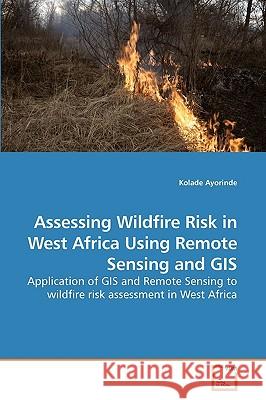Assessing Wildfire Risk in West Africa Using Remote Sensing and GIS » książka
Assessing Wildfire Risk in West Africa Using Remote Sensing and GIS
ISBN-13: 9783639259520 / Angielski / Miękka / 2010 / 52 str.
Wildfire has devastating effects on man and the ecosystem. The West African Savannah is prone to wildfire because of human activity manifested by the yearly burning of biomass for cultivation. The extent of the burning is worsened by economic exploitation of the forest for development. Appropriate data is lacking in local, national or regional levels in West Africa to monitor and control the risk of wildfire. Remote sensing offers a means of collecting relevant data for monitoring fire risk. In order to assess fire risk in the West Africa, NDVI data of January to December 1990 was acquired and analyzed with the aid of GIS. The study area was classified into four bio- ecological zones: the Sahel, the Sudan Savannah, the Guinea Savannah and the forest zone. The results of the study indicate that the Savannah zones are susceptible to high fire risk from December to May, while the forest zone is mostly susceptible to high fire risk in the months of December and January. Verification of the results with fire occurrence maps of 1993 indicate that the prediction of high risk often correspond with a high number of occurrence of fires.











